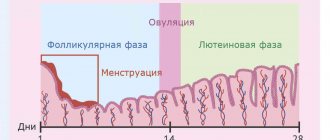Detailed description of the study
Aspartate aminotransferase (AST) is an enzyme involved in the metabolism of amino acids, which is found in the highest concentration inside the cells of the liver, heart, skeletal muscles, kidneys, and pancreas.
In a healthy person, AST is detected in the blood in a small concentration. In the event of cell destruction, this enzyme is released from them and enters the bloodstream. AST activity in the blood increases, the degree of increase reflects damage to organs and tissues.
About 90% of the causes of increased AST activity in the blood are heart and liver diseases. Among cardiovascular diseases, myocardial infarction and acute heart failure lead to a significant increase in the concentration of this enzyme. Destruction of liver cells, hepatocytes, also increases AST activity in the blood. Damage to hepatocytes is caused by inflammation in the liver due to exposure to viruses, bacteria, excess alcohol or toxic substances. In addition, metabolic disorders in the liver or deterioration of its blood supply lead to an increase in the flow of AST into the blood.
To better understand the causes of organ damage, it is recommended to determine the activity of two aminotransferase enzymes in the blood - AST and ALT (alanine aminotransferase).
When the heart is damaged, AST activity predominantly increases. In acute hepatitis, on the contrary, ALT activity is higher
Your doctor may recommend taking a test to determine AST activity if you notice:
- Yellowness of the skin, whites of the eyes;
- Darkening of urine;
- Discoloration of stool;
- General weakness, drowsiness;
- Skin itching;
- Bloating;
- Lack of appetite;
- Increased abdominal volume in the absence of obesity;
- Swelling of the lower extremities and torso.
In preschool children and adults whose veins are difficult to access, a blood test to determine AST activity is performed from a finger prick (capillary blood).
Who is prescribed an ALT test?
An ALT test is prescribed in the presence of certain symptoms and factors:
Symptoms of liver disease:
- weakness, lack of appetite, nausea and vomiting;
- abdominal pain, jaundice;
- dark urine and light-colored feces.
Risk factors for liver disease:
- previous hepatitis,
- alcohol addiction,
- diabetes and obesity,
- hereditary reasons
- taking medications that have an aggressive effect on the liver.
ALT blood test is carried out for the following purposes:
- checking for possible liver damage due to injury;
- identification of drug and alcohol addiction within the framework of a set of interrelated indicators;
- assessment of the effect of anticholesterol therapy and a number of other drugs that are relatively toxic to the liver;
- Finding out the cause of jaundice in a patient - liver disease or blood dysfunction.
A patient who is prescribed an ALT test should inform his doctor about the presence of reasons that could reduce the accuracy of the test results:
- taking certain medications, dietary supplements and herbal infusions (oral contraceptives and aspirin, warfarin and paracetamol, infusions of valerian and echinacea);
- possible pregnancy;
- presence of allergies;
- completing a course of intramuscular injections;
- rehabilitation period after cardiac surgery or cardiac catheterization;
- active physical activity before the test.
The test is performed on the patient's venous blood and results can be available in approximately 12 hours.
Important Notes
Material for research
Children under 7 years of age: venous blood/capillary blood (for special indications). Children over 7 years of age and adults: venous blood.
Capillary blood collection for research is carried out only for children under 7 years of age and adults whose veins are difficult to access (for special indications)!
According to GOST R 53079.4-2008, indications for taking capillary blood are possible in newborns, in patients with very small or hard-to-reach veins, with large-area burns, and in severely obese patients.
How to prepare for donating blood for an AST level test?
It is not difficult to remember how to prepare for donating blood for an AST level test. This is a standard blood test taken from a vein using a vacuum tube. It must be taken on an empty stomach in the morning. At least 8 hours must pass after the last meal. It is important to avoid the use of alcohol and certain medications a week before donating blood, as well as limit physical activity the day before the test.
It is best to donate blood to determine AST levels with the direction of a general practitioner. Before sending you for analysis, the doctor will review your medical history and clarify the details of your well-being. With the results, which will be ready within 1 day, you need to return to the doctor and get an accurate diagnosis, made up of the results of the AST level and other indicators, as well as other symptoms and examination results.
References
- Ivashkin, V.T., Mayevskaya, M.V., Pavlov, Ch.S. and others. Clinical recommendations of the Russian Society for the Study of the Liver for the management of adult patients with alcoholic liver disease. Russian Journal of Gastroenterology, Hepatology, Coloproctology, 2021. - V. 27(6). — P. 20-40.
- Schiff, Y.R., Sorrell, M.F., Maddray, W.S. Introduction to hepatology / ed. V.T. Ivashkina, A.O. Bueverova, M.V. Mayevskaya. - M.: GEOTAR-Media, 2011. - 704 p.
- Colombo, M. EASL clinical practice guidelines for the management of occupational liver diseases. Liver Int., 2021. - Vol. 40(1). — P. 136–141.
- Newsome, P., Cramb, R., Davison, S. et al. Guidelines on the management of abnormal liver blood tests, 2021. - Vol. 67. - P. 6-19.
How does the level of alanine aminotransferase in hepatitis depend on gender?
Russian scientists, having examined 320 people, including both sick people and healthy people (control group), found that in women with chronic hepatitis, the ALT indicator in 78.6% of cases does not correspond to the severity of the disease. Some patients even had normal alanine aminotransferase levels.
In men, the number of cases of hepatitis not accompanied by an excess of the concentration of this enzyme was only 21.4%, that is, the difference between the sexes is 3.7 times. Moreover, even with approximately the same severity of the disease, in women this figure was 1.5 times lower.
The female body has great potential to combat liver pathology, so if a representative of the fairer sex has clear signs of “liver problems,” then one test
for alanine aminotransferase is not enough - it may not be informative. At a minimum, you still need to undergo an ultrasound of the liver.
In order to get a real picture of the functioning of the liver, it is necessary to carry out other liver tests, then it is possible to more accurately say whether a woman has this pathology or not. Representatives of the fair sex often experience a latent course of chronic hepatitis, when symptoms of liver damage appear later, in the presence of pronounced, sometimes irreversible, changes. In addition, they are characterized by a more rapid restoration of normal ALT levels after Botkin’s disease, which is also associated with the physiological characteristics of the female body.
All these factors must be taken into account when examining men and women for the presence of liver pathologies.
Dependence of alanine aminotransferase levels on gender in viral hepatitis
ALAT norm
with various types of hepatitis it can increase 20 or even 100 times. In this case, the cause of this pathology (viruses, poisoning, hemolysis of red blood cells) does not play a role.
- In Botkin's disease, an increase in this biochemical indicator can be observed even before the appearance of jaundice and other clinical symptoms. Also, the level of ALT in the blood
may be increased for some time after recovery, returning to normal (women - 31 U/L; men - 45 U/L) after two to three weeks. - With “syringe” viral hepatitis , especially those with a chronic and protracted course (CVH), this indicator can constantly fluctuate either down or up. Sometimes it depends on the stage of the infectious process, and in some cases such jumps are difficult to explain.
- Mechanical (obstructive) jaundice also causes sudden changes in ALT concentration. With this pathology, the level
of alanine aminotransferase in the blood can rise to 600 U/L in one day, and then spontaneously return to normal within about two days.
If obstructive jaundice is due to primary liver cancer, the concentration of alanine aminotransferase remains consistently high.
Dependence of ALT level on age and other indicators
During a person's life, the level of ALaT changes. You need to know this in order to correctly decipher ALT in a biochemical blood test.
- In healthy full-term newborns, the alanine aminotransferase rate ranges from 10 to 17 U/l.
- If the baby was born prematurely, then this figure can be 13–26 U/l, and the level of this substance in the blood of such babies changes almost daily.
- From the sixth day of life to six months of age, the upper limit of alanine aminotransferase increases slightly and amounts to 30 U/l. This is explained by the fact that in the first six months all biochemical mechanisms are gradually “launched” in the baby’s body, because the child adapts to existence outside the mother’s womb.
- From seven months to a year, this figure fluctuates between 13–29 U/l. At this time, the indicators for boys and girls do not yet differ.
- From one year to 14 years, the concentration of alanine aminotransferase in boys and girls is different. Moreover, in the female body it will be lower than in the male body. For girls of preschool age, the norm will be considered a concentration of 13–18 U/l, and for boys the upper limit is already 22 U/l. This trend will continue throughout your life.
Alanine aminotransferase levels in adults
- Before reaching the age of 60, the normal alanine aminotransferase level in men is 10–45 U/L, while the normal ALT level in women during this period is only 10–31 U/L.
- The level of this substance in the blood can only change during pregnancy, and then not in all women. In some cases it remains unchanged. If the expectant mother's ALT level is slightly elevated and is 35 U/L, this is not a cause for concern. An increase in ALT during pregnancy is caused by the fact that the enlarged uterus may slightly compress the bile ducts or a slight bend has appeared in the bile ducts. There is no need to be afraid of this state of affairs - after childbirth, the uterus will shrink and the indicators will return to normal. However, if the increase in ALaT in the blood during pregnancy continues, and the concentration of this substance reaches high levels, additional examinations should be performed, as this may be associated with impaired functioning of the liver, kidneys and heart.
- When people “step over” the 60-year barrier, the level of alanine aminotransferase in the blood also changes. Normally, ALT in men of this age ranges from 10 to 40 U/l, and for females it will be 10–28 U/l. The concentration of alanine aminotransferase remains at this level until the end of life.
However, a normal blood level of this substance does not always indicate that a person is healthy. In some cases, even with severe pathology of the liver and kidneys, the indicator does not change, especially for the fairer sex. That is why an isolated study of the concentration of this enzyme in the blood is very rarely prescribed. Most often, other biochemical indicators are analyzed in parallel, which allows a much more accurate understanding of the state of the body.
Indications for analysis
A biochemical blood test, during which the AST level is determined, is prescribed for a number of diseases, including:
- All liver pathologies.
- Diseases of the circulatory system.
- Chronic and acute heart diseases.
- Kidney failure.
- Infections.
- Intoxication.
- All types of jaundice and bilirubin metabolism disorders.
- Autoimmune diseases.
- Purulent-septic pathologies.
- Encephalopathy of unknown etiology.
- Bile outflow disorders, cholelithiasis.
- Chronic pancreatitis.
- Endocrine diseases.
- Malignant tumors.
- Allergic skin diseases.
- Long-term treatment with antibiotics, chemotherapy and various toxic drugs.
- Injuries to the abdomen and chest.
- Preparation for a complex surgical operation.
- Evaluation of treatment of liver and cardiac pathologies.
Amino acids and proteins
Protein often decreases during fasting or when following diets, but it can indicate a number of pathologies: chronic bleeding, problems with metabolic processes, anemia. Underestimated data is the norm during breastfeeding, during pregnancy (late pregnancy), for bedridden patients or in case of significant physical exertion.
The interpretation of the tests taken during blood biochemistry is considered carefully and normal values should not be exceeded. The protein is present in excessive amounts in individuals with autoimmune diseases, during infections, in cases of significant kidney pathologies or in the presence of malignant tumors.
Reduced levels of amino acids are a bad indicator, observed when there are problems in metabolic processes, often resulting in kidney or liver problems.







